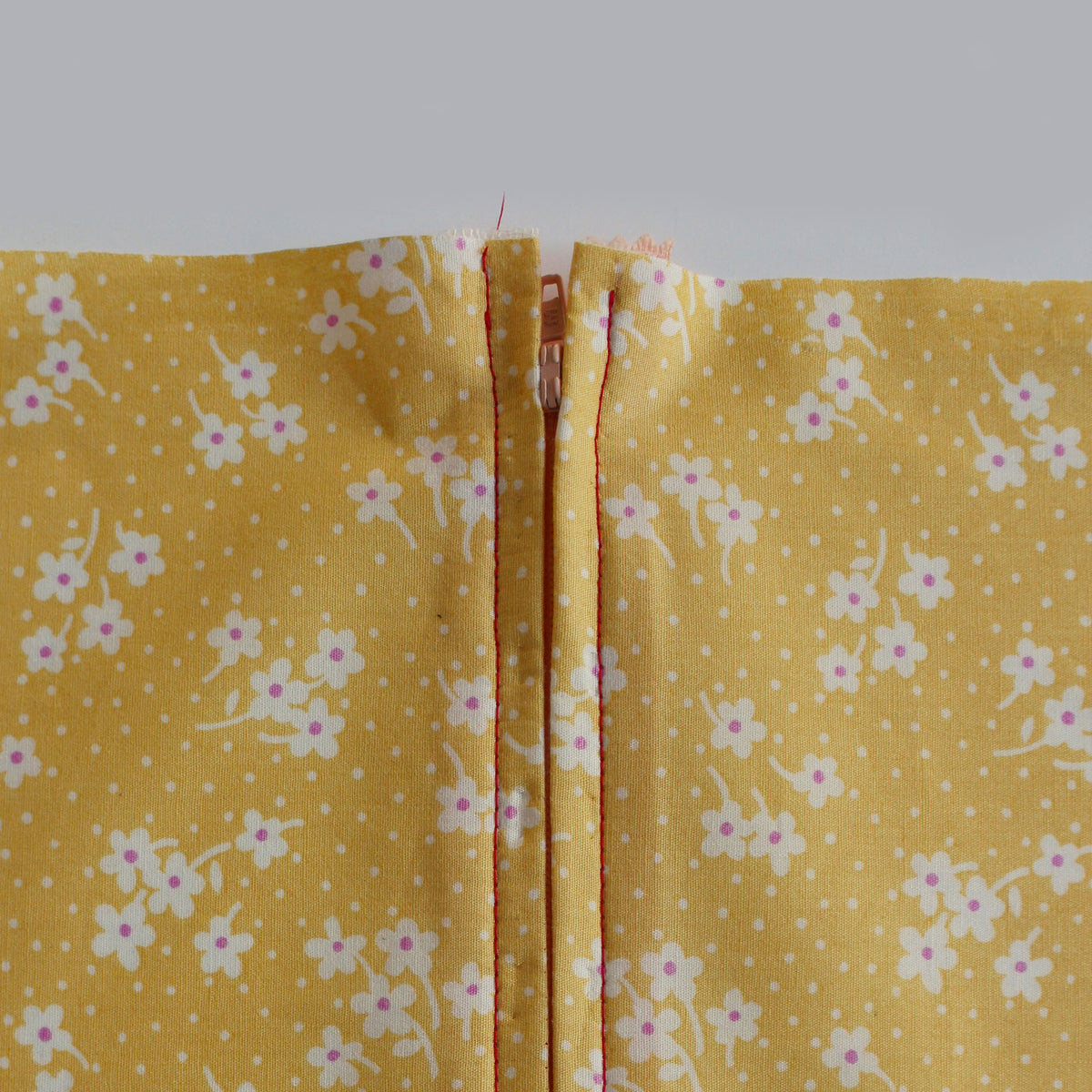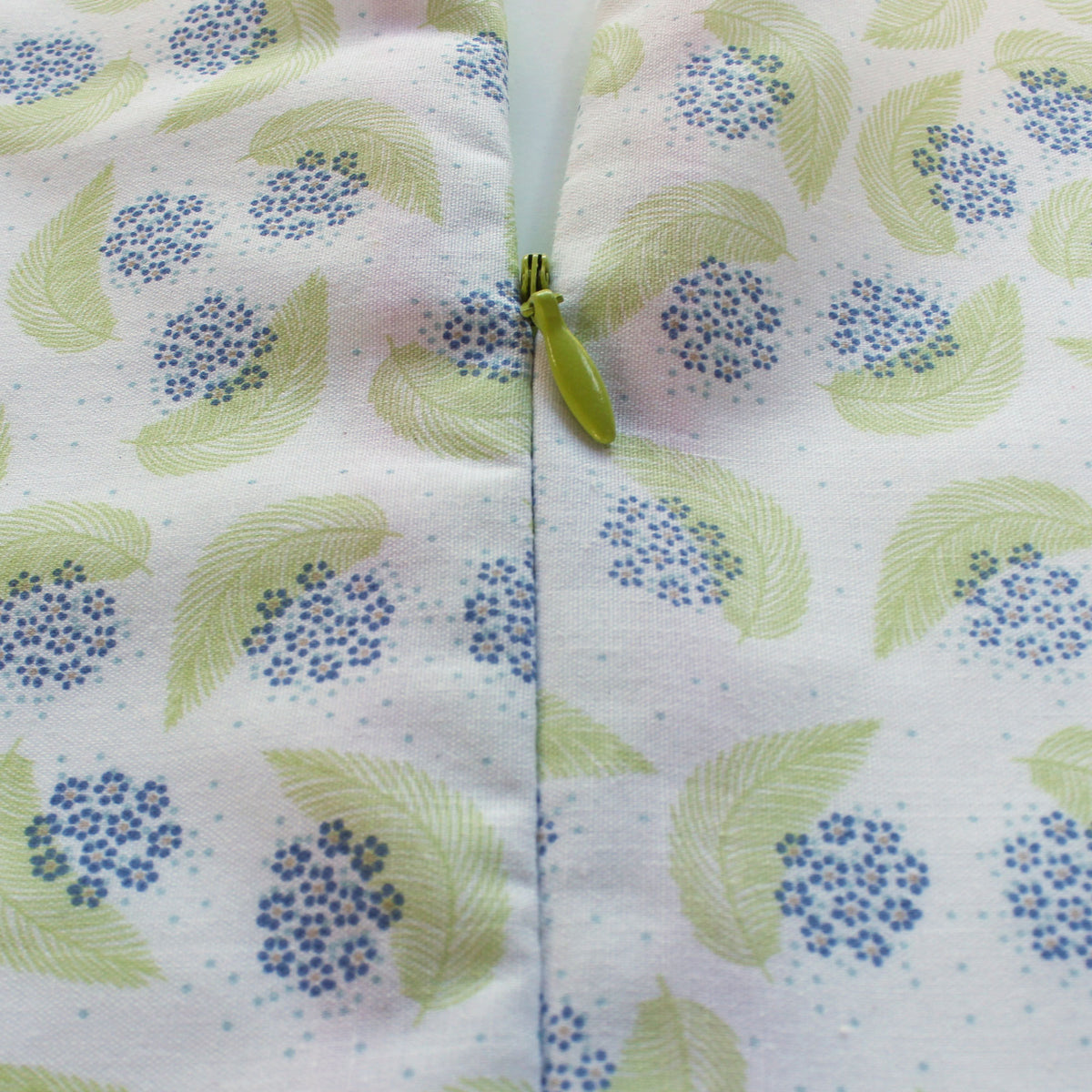DIY Shirring Guide Foot

Shirring is a really simple technique once you have everything set up correctly. One of the crucial elements to successful shirring is to make sure that the lines are evenly spaced throughout the project. The Sofia pattern features a complete guide on how to sew shirring and it it instructs on how to mark your fabric in preparation for shirring. While that step takes time, it will help in producing really tidy shirring.

There is another option that you can use instead of marking the fabric to help sew straight, evenly distanced lines of shirring. Using a pressure foot with a 1/2" guide is an amazing time saving alternative. While not all feet will allow for this distance, there is a foot that is specifically designed for the task, called "Border Guide foot". It is designed for instances like shirring that require even alignment while sewing.

Border Guide Foot by Janome
(Low shank / Snap on)
Since this likely isn't a standard foot that comes with your machine, I wanted to show you a quick and easy way that you can create your own.

For this tutorial, we'll be attaching a small piece of wood to our regular pressure foot using hot glue. I'd suggest only doing this if your pressure foot is made of metal, as the glue can melt a plastic foot. This is a temporary foot "hack" that will work for the duration of your project, and you can easily remove the attachment afterwards, since hot glue is easily removed from metal surfaces.
What you'll need:

- Ruler or measuring tape
- Narrow wooden stick such as a take out chopstick, kebab stick, 1/8" dowel, or toothpick. Cut it to a length of 1.5" (4 cm)
- Hot glue gun
- Marker
How to Make the Foot:
Step 1:
Add a small dollop of hot glue to the front of your foot, right in front of where the needle goes. Don't worry if the glue covers the area where thread feet through; you will still be able the sew properly.
Use a small amount of glue, as you don't want it to block the needle area.

Step 2:
Center the piece of wood onto the foot, gluing it in place.

Step 3:
Using the measuring tape, mark 1/2" to either side of the center of the needle. Try to be as accurate as possible.
Note: We are marking on both sides of the needle because the "continuous Method" of shirring uses a continuous line of sewing; the garment piece will be pivoted from the left to the right side of the foot as the shirring lines are sewn

How to Sew with the Foot:
Attach the foot to the machine and bring the top and bottom thread so that they both lay under the foot.

Sewing the Bodice & Bishop Sleeve
Both the bodice and the Bishop sleeve allow you to use the folded edge of the piece as the guide for the fist shirring stitch. Sew this first line at 1/2" (1.3 cm).

For the remaining shirring lines, use the guide foot to align with the neighboring stitch.

As you sew the continuous method, you will be pivoting the garment piece, resulting in the shirring transitioning to both the left and right side of the foot. Because of this, the guide foot has marks on both sides of the foot.

Sewing the Cap and Elbow Puff Sleeve:
The shirring on these sleeve style is set in approximately 2" from the hem edge. Draw a chalk line on the fabric for the fist line of shirring; this will be the guide for the first shirring stitch. Use the guide foot for the remaining lines of shirring.



Once the shirring is complete, you can remove the wood and any glue residue should peel off easily. I hope this tip helps you in saving a bit of time and in making shirring easier!
YOU MAY ALSO LIKE:
Leave a comment
Comments will be approved before showing up.
Also in The Victory Patterns Blog

Pair the Sofia Bell Sleeve Strap with any sleeve option

How to sew a centered zipper
A centered zipper is one of the most usefull zippers to be able to sew. They are commonly used in skirts, dresses, and pants, as well as cushion covers and handbags. In this tutorial, we'll show you how to sew a centered zipper using directional sewing, which avoids the fabric from shifting in different directions once the zipper is sewn in.



